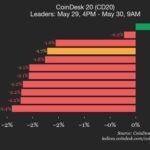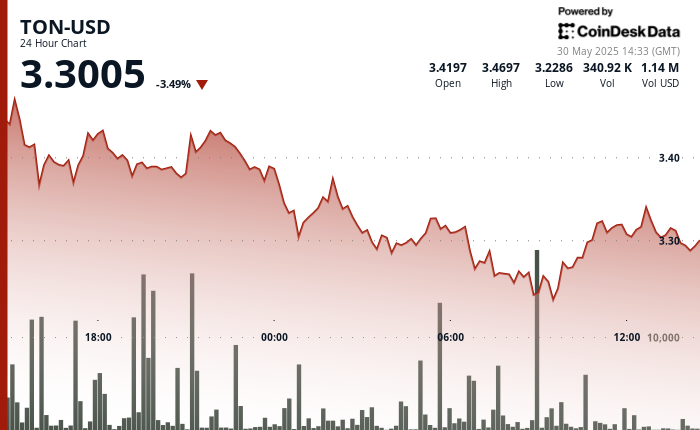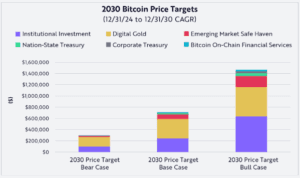
Bitcoin stabilizes beneath record peak as profit-taking and tariff concerns temper price momentum.
Bitcoin (BTC) is currently in a phase of healthy consolidation following its recent peak of $111,880. However, it is still vulnerable to significant sell-off pressures.
A recent report highlights that strong demand and stable inflows into exchange-traded funds (ETFs) had previously propelled BTC more than 50% since the lows seen in early April. This upward trend faced a setback when geopolitical tensions emerged, particularly a tariff warning from President Trump concerning imports from the European Union, which prompted a risk-averse response across the market.
The resulting macroeconomic shock combined with high leverage in perpetual futures led to a wave of liquidations, driving Bitcoin’s price down to below the $107,000 mark within just 36 hours.
Nevertheless, this downward movement was a necessary adjustment. During this correction, futures funding rates became negative, indicating that traders were promptly lowering their directional bets, leading to decreased open interest as forced sellers exited their positions.
Profit-taking impacts momentum
Two primary groups contributed to this selling pressure: those who bought in at lower levels and decided to realize their gains, as well as earlier investors who were at a loss and chose to exit at breakeven.
The combined effect of these sellers resulted in what the report labels an “overhead supply glut,” which may hinder price growth without a significant increase in new capital inflows. Data from exchanges indicates a drop in incremental buying, while perpetual basis rates remain low following last week’s events.
The analysis suggests that a phase of sideways trading or slight retracement would strengthen market structure by eliminating excess leverage and allowing spot demand to regain its influence.
Such consolidation has historically been a precursor to new gains. However, the report advised caution, noting that the extent of any retracement could be influenced by broader economic conditions, including further developments regarding tariffs and whether ETF investments return to previous levels.
Futures reset creates trading bounds
In light of the existing macroeconomic uncertainties and profit-taking tendencies, the report anticipates that Bitcoin will fluctuate between last week’s intraday low of $106,000 and the $111,000 range until new demand effectively absorbs the overhead supply or a further downturn entices buyers at lower prices.
A series of seven consecutive weekly gains indicates strong upward momentum, marking the longest such streak since October 2023. Nonetheless, the report pointed out that such upward movements often temper as leverage normalizes.
Data from the blockchain confirms this slowdown. The realized price for short-term holders (STH) has risen to $95,164, and selling activity intensified once this level was reclaimed.
Over the last 30 days, short-term holders realized profits of $11.4 billion, in contrast to only $1.2 billion from the previous month. Realized profits peaked at $747 million per day, a threshold surpassed in only about 8% of Bitcoin’s trading history.
The report also warned that the STH Realized Profit/Loss Ratio escalated to levels typically seen during late-stage rallies. At this stage, significant distribution could potentially limit further gains if fresh capital fails to enter the market.
Bitcoin Market Data
As of the latest update, which was at 7:14 pm UTC, Bitcoin holds the top spot by market capitalization, priced at up 1.67% in the last 24 hours. Its market cap is $2.17 trillion, with 24-hour trading volume reaching $47.16 billion.
Crypto Market Summary
As of the latest update, the total valuation of the cryptocurrency market stands at $3.42 trillion, accompanied by a 24-hour volume of $105.94 billion. Bitcoin’s dominance in the market is currently at 63.46%.


















Post Comment